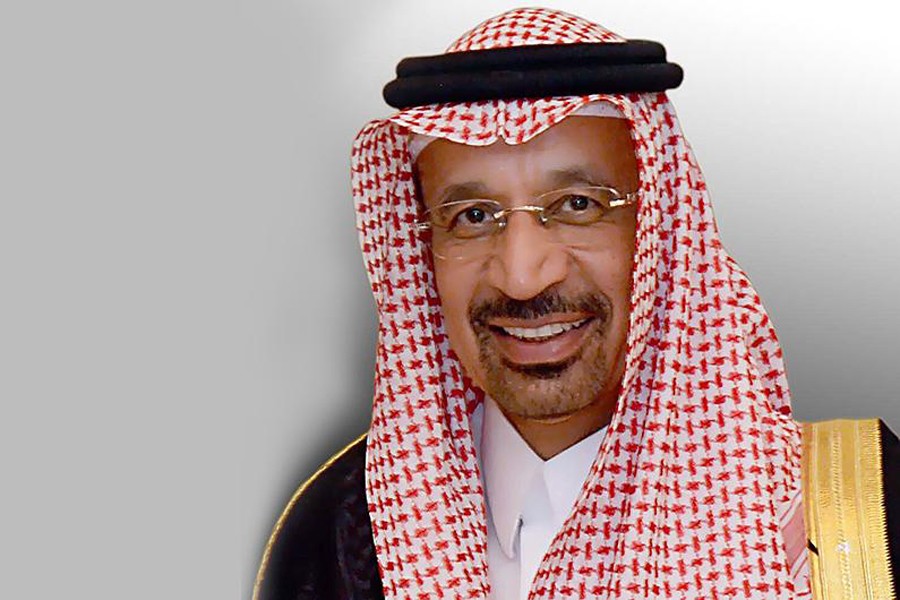SINGAPORE, Nov 1 (Reuters): Top oil exporter Saudi Arabia will hike December crude prices for customers in Asia to levels last seen in 2013 or 2014, a Reuters survey showed, with OPEC-led output cuts and robust demand re-balancing markets for the commodity.
The producer is expected to raise flagship Arab Light's December official selling price to at least 90 cents a barrel above Oman/Dubai quotes, the survey of five refiners showed. That would be the highest premium since $1.65 in September 2014, according to Reuters data.
Prices for heavier grades may see a bigger boost in December, the survey showed, with Arab Heavy's OSP set to rise to at least $1.30 below Oman-Dubai quotes. That would be the narrowest discount for Saudi heavy crude since minus $1.05 in December 2013, according to Reuters data.
The increases would come on the back of stronger Middle East crude benchmark prices and firm refining margins, the respondents said.
Dubai's backwardation widened in October compared with the previous month. In a backwardated market, prompt prices are higher than those in future months signaling strong demand for spot cargoes.
Complex refining margins in Singapore, a gauge of refiner profitability in the region, held above $7 a barrel for a fourth month in October, Thomson Reuters Eikon data showed.
Gains in naphtha margins could prop up Arab Extra Light's OSP in December by at least 50 cents a barrel, the survey showed. Saudi crude OSPs are usually released around the fifth of each month, and set the trend for Iranian, Kuwaiti and Iraqi prices, affecting more than 12 million barrels per day (bpd) of crude bound for Asia.
Saudi Aramco sets its crude prices based on recommendations from customers and after calculating the change in the value of its oil over the past month, based on yields and product prices.
Saudi Aramco officials as a matter of policy do not comment on the kingdom's monthly OSPs.
Meanwhile, oil prices rose to near recent highs on Wednesday as data showed OPEC has significantly improved compliance with its pledged supply cuts and Russia is also seen keeping to the deal.
Brent futures, the international benchmark for oil prices, were at $61.32 per barrel at 0759 GMT, up 38 cents, or 0.6 per cent, since their last close and near the $61.41 a barrel two-year high from intraday trading on Tuesday. Brent is up almost 40 per cent since its 2017-lows last June.
US West Texas Intermediate (WTI) crude was at $54.95 a barrel, up over half a dollar, or 1 per cent, to a fresh high. It is up some 30 per cent since 2017 lows hit in June.
Physical oil markets are also strong, with top exporter Saudi Arabia expected to hike December crude prices for customers in Asia to levels last seen in 2013 or 2014, a Reuters survey showed.
Arab Light's December official selling price to at least 90 cents a barrel above Oman/Dubai quotes, the survey of five refiners showed. That would be the highest premium since $1.65 in September 2014, according to Reuters data.
Bullish sentiment has been fueled by an effort this year lead by the Organisation of the Petroleum Exporting Countries (OPEC) and Russia to hold back about 1.8 million barrels per day (bpd) in oil production to tighten markets.
While compliance was low during the first half of the year, supplies have been reduced significantly since.
OPEC's October output fell by 80,000 bpd to 32.78 million bpd, putting adherence to its pledged supply curbs at 92 per cent, up from September's 86 per cent.
Russia is also seen to be in compliance with cutting its output by around 300,000 bpd below October 2016 levels of 11.247 million bpd.
Trade data shows that global oil markets have been slightly undersupplied during the past quarters, resulting in inventory drawdowns.


